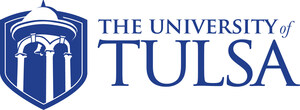Concussions, years of play related to long-term brain injury, TU/LIBR study shows
TULSA, Okla., May 13, 2014 /PRNewswire/ -- College football players who have experienced a concussion or have been playing the high-impact sport for many years have significantly smaller regions of the brain that relate to memory than student-athletes with fewer years of football experience, according to a study published Tuesday by the Journal of the American Medical Association.
The study, conducted at The University of Tulsa (TU) in partnership with the Laureate Institute for Brain Research (LIBR), is the most comprehensive ever to assess the effects of football specifically on college players.
"Other studies have evaluated the effects on older athletes, such as retired NFL players, but no one has studied 20-year-olds until now – and the results were astounding," said Patrick S.F. Bellgowan, director of cognitive neuroscience for LIBR and a faculty member at TU. "The next step is to assess what caused this difference in hippocampus size."
"Although more research is necessary, this study shows that football players with a history of concussions have a hippocampus that is 24 percent smaller than non-athletes," Bellgowan said. "The study presents a clear correlation, further research of this kind is needed to truly understand any potential causation."
Fifty TU football players including 25 with a history of concussions were assessed in real time for differences in hippocampal volume and cognitive performance. The test group included 25 TU students who had never played football.
David Polanski, The University of Tulsa's head athletic trainer and co-author of the study, developed the hypothesis that the number of years of football-playing experience might contribute to anatomical and behavioral changes. Results showed an inverse association between hippocampal volume and reaction. Also, more years of playing football correlated with slower reaction time.
"As a premier research university and NCAA Division I school, TU is committed to studying the effect of contact sports on the brain," said Polanski. "This research brings us one step closer to understanding the connection between contact sports and brain injury."
The University of Tulsa will continue supporting this research in any way possible including through the athletic program, Polanski asserted. "This research shows the correlation; the next step is to determine causation so that long-term brain injury can be identified and prevented," he said.
"The Laureate Institute wants to study the brain in order to prevent and treat a variety of mood and mental illnesses. The TU Department of Athletics identifies with that mission in a very specific way: TU wants to protect its players," Bellgowan said. "Our partnership is integral in this specific research area, and this research will yield imperative information for contact-sport athletes moving forward."
For more information: http://www.utulsa.edu/about-TU/news-events-publications/UniversityNews/2014/May/brain-study.aspx
Editor's Note: This research was conducted using internal funds from the Laureate Institute for Brain Research, which is supported by the William K. Warren Foundation. All authors have completed and submitted the ICMJE Form for Disclosure of Potential Conflicts of Interest and none were reported.
The University of Tulsa faculty and staff involved in the study include: Rayus Kuplicki, Ph.D. – Tandy School of Computer Science; Jonathan Savitz, Ph.D. - faculty of Community Medicine; Christopher Nerio, M.S. - Department of Athletics; David Polanski, M.S. - Department of Athletics; and Patrick S.F. Bellgowan, Ph.D. - faculty of Community Medicine.
SOURCE The University of Tulsa
WANT YOUR COMPANY'S NEWS FEATURED ON PRNEWSWIRE.COM?
Newsrooms &
Influencers
Digital Media
Outlets
Journalists
Opted In





Share this article